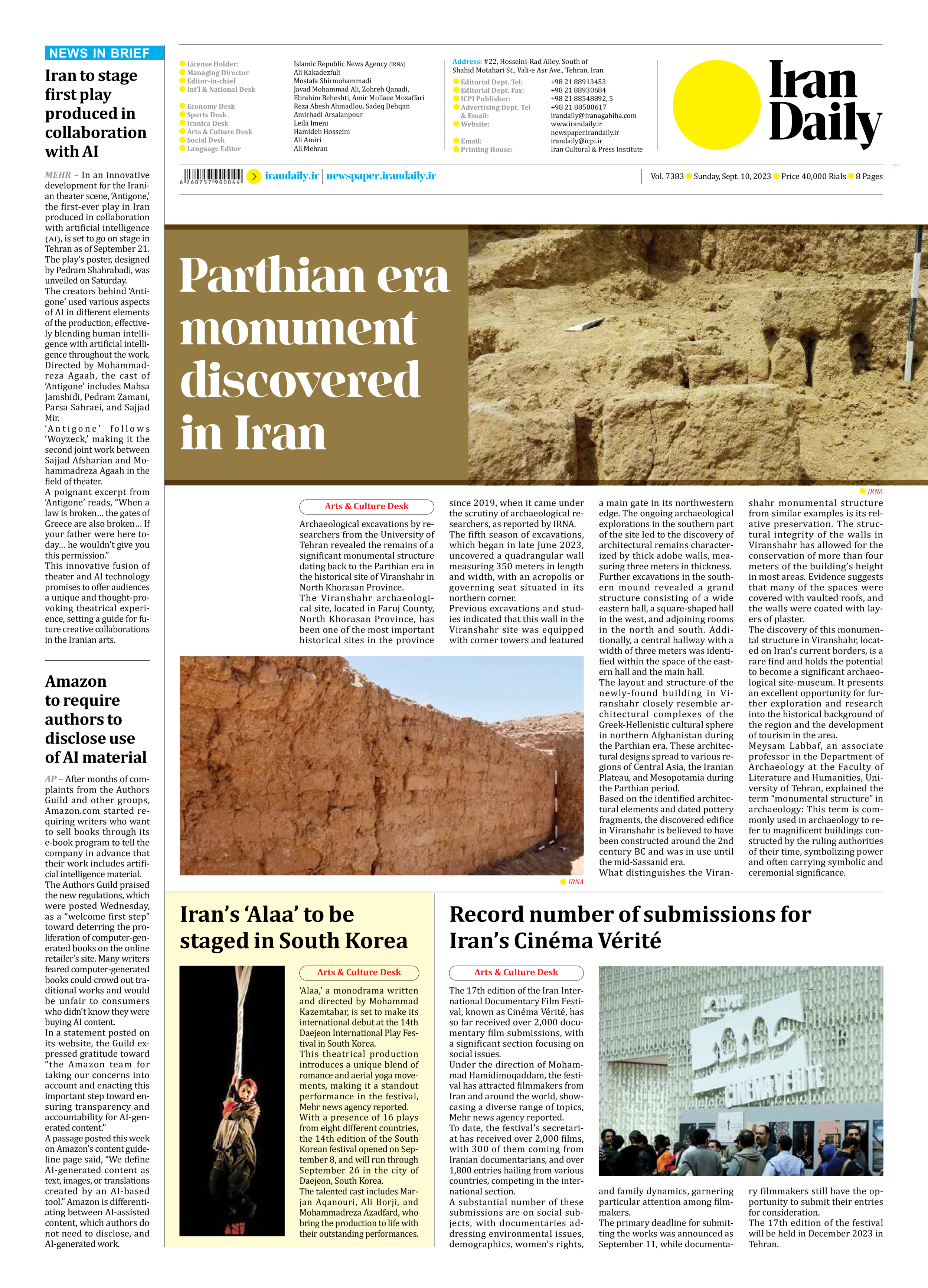
Parthian era monument discovered in Iran
Archaeological excavations by researchers from the University of Tehran revealed the remains of a significant monumental structure dating back to the Parthian era in the historical site of Viranshahr in North Khorasan Province.
The Viranshahr archaeological site, located in Faruj County, North Khorasan Province, has been one of the most important historical sites in the province since 2019, when it came under the scrutiny of archaeological researchers, as reported by IRNA.
The fifth season of excavations, which began in late June 2023, uncovered a quadrangular wall measuring 350 meters in length and width, with an acropolis or governing seat situated in its northern corner.
Previous excavations and studies indicated that this wall in the Viranshahr site was equipped with corner towers and featured a main gate in its northwestern edge. The ongoing archaeological explorations in the southern part of the site led to the discovery of architectural remains characterized by thick adobe walls, measuring three meters in thickness.
Further excavations in the southern mound revealed a grand structure consisting of a wide eastern hall, a square-shaped hall in the west, and adjoining rooms in the north and south. Additionally, a central hallway with a width of three meters was identified within the space of the eastern hall and the main hall.
The layout and structure of the newly-found building in Viranshahr closely resemble architectural complexes of the Greek-Hellenistic cultural sphere in northern Afghanistan during the Parthian era. These architectural designs spread to various regions of Central Asia, the Iranian Plateau, and Mesopotamia during the Parthian period.
Based on the identified architectural elements and dated pottery fragments, the discovered edifice in Viranshahr is believed to have been constructed around the 2nd century BC and was in use until the mid-Sassanid era.
What distinguishes the Viranshahr monumental structure from similar examples is its relative preservation. The structural integrity of the walls in Viranshahr has allowed for the conservation of more than four meters of the building’s height in most areas. Evidence suggests that many of the spaces were covered with vaulted roofs, and the walls were coated with layers of plaster.
The discovery of this monumental structure in Viranshahr, located on Iran’s current borders, is a rare find and holds the potential to become a significant archaeological site-museum. It presents an excellent opportunity for further exploration and research into the historical background of the region and the development of tourism in the area.
Meysam Labbaf, an associate professor in the Department of Archaeology at the Faculty of Literature and Humanities, University of Tehran, explained the term “monumental structure” in archaeology: This term is commonly used in archaeology to refer to magnificent buildings constructed by the ruling authorities of their time, symbolizing power and often carrying symbolic and ceremonial significance.







